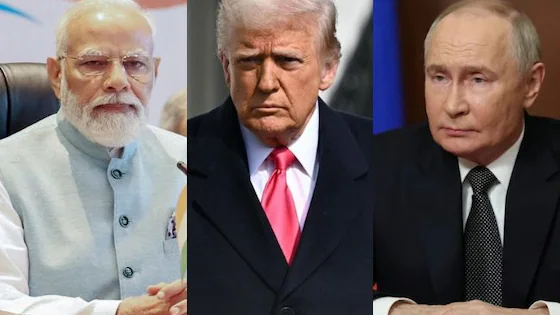Lagatar24 Desk
New Delhi: As US President Donald Trump imposes a 50% tariff on Indian goods over Russian oil imports, India faces a strategic dilemma: safeguard its energy security and discounted crude from Russia or protect its crucial trade relationship with the US. Experts suggest India is unlikely to yield under pressure, but the decision carries high economic and diplomatic stakes.
Trump’s Move Aims at Putin via New Delhi
Trump’s tariff hike—doubling the rate to 50%—is seen as a maneuver to pressure Russian President Vladimir Putin by targeting his key energy ally. India, the world’s third-largest oil consumer, has boosted Russian crude imports since 2022 to offset rising global oil prices. However, the tariff poses new risks to India’s exports, with fears of making them uncompetitive in the US market, which absorbed $87 billion in Indian exports last year.
Modi Defends National Interests
Prime Minister Narendra Modi indirectly responded to Trump’s move by reinforcing his commitment to protecting Indian farmers, dairy workers, and fishermen, even at personal political cost. While this was not directly about oil, the underlying message was clear: India won’t be coerced. With discounts on Russian oil shrinking and political costs rising, there may be room to diversify imports gradually, but Modi’s government resists appearing submissive.
US Pressure, But No Clear Shift in India’s Policy
Despite Trump’s aggressive trade tactics, including threats of secondary tariffs effective from August 27, India is not expected to fully retreat from Russian oil. Bloomberg reports that Indian refiners are already reducing Russian spot purchases and exploring alternatives like the US, UAE, and Nigeria. Yet, without full-blown sanctions on Russian oil, systemic changes remain unlikely. Analysts highlight that India still benefits from its energy diversification strategy.
History, Economics, and Politics Intertwine
India’s oil trade with Russia surged after the Ukraine war and Western sanctions, making up 37% of imports. Trump’s reversal of earlier US acceptance of India’s Russian oil purchases has sparked confusion. Indian officials warn that removing Russia from the supply chain could spike global prices again, similar to 2022. With oil currently trading under $70, India has room to pivot if needed—but without burning bridges.
China’s Role Looms Large
As India potentially scales back, China could become the fallback buyer for Russia. However, experts note that Beijing prefers diversification to avoid overdependence. Trump hinted that China might be next for tariff action if it absorbs India’s share of Russian crude, underlining the broader geopolitical implications of his tariff strategy.









